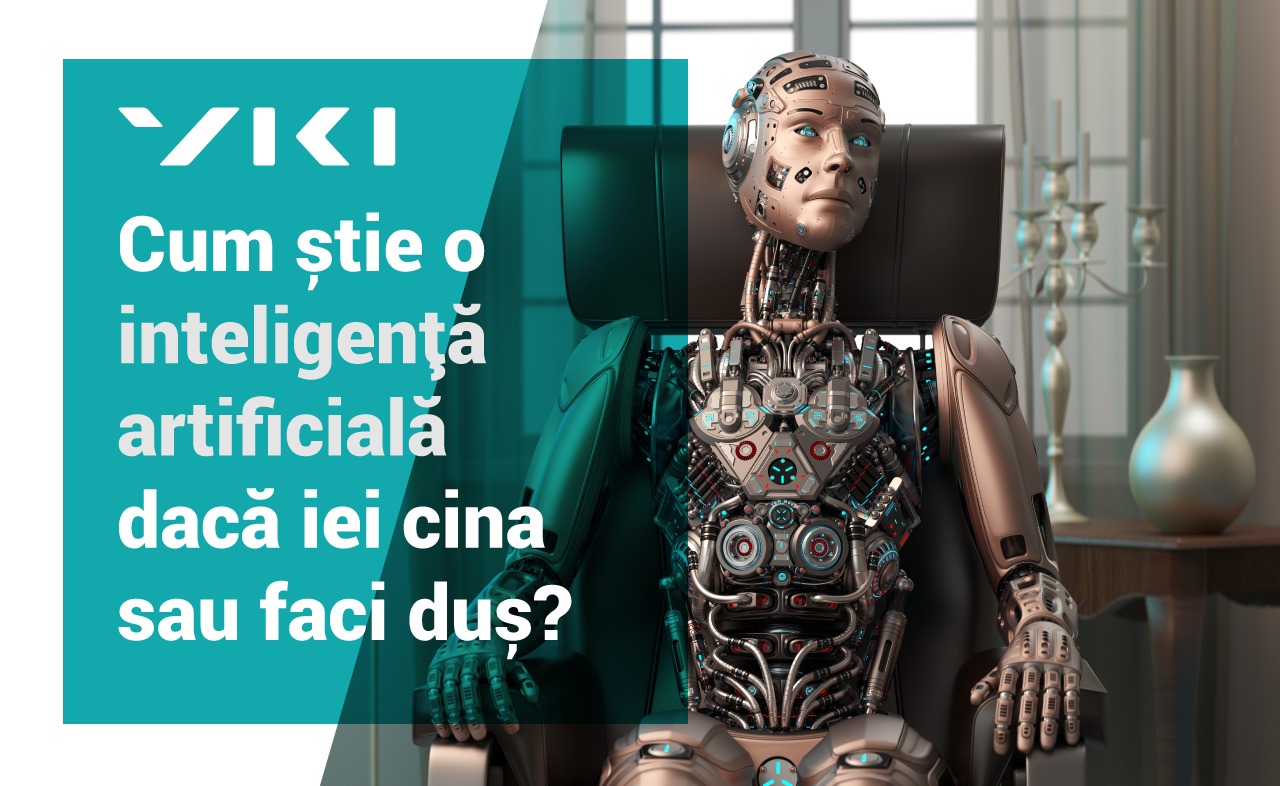In the last 8 years, together with an extraordinary team, I have developed and implemented a technology through which the environment in our homes adapts to the needs of the family through the automatic control of environmental facilities, using artificial intelligence algorithms. In homes where we implement this concept, lights, air conditioning, shading or ventilation, multimedia devices and almost any electric equipment show a behavior ‘synchronized’ with user expectations. To put it simple, the house anticipates the user’s needs, without the user having to interact continuously and explicitly with the house, through buttons, remote controls, smartphones or voice. But how do these things happen? What are the mechanisms that lead to this way of ‘functioning’ of the house?
Smart home technology has evolved a lot in recent years, and IoT (Internet of Things) and Artificial Intelligence (AI) have become a reality in the world we live in. From the dozens of discussions I’ve had with specialists and potential beneficiaries of such use of AI, the question has often arisen as to whether society is ready to leave its life in the hands of artificial intelligence. And the answer was: It depends on intelligence!
Artificial Intelligence is a vast field that I do not claim to master entirely, but I can say that we have seriously approached a branch of Artificial Intelligence called Machine Learning, which helps us a lot in the way we make decisions in the VIKIKNOWS project. Machine learning offers supervised or unsupervised learning methods and models, their applicability reaching extremely diverse branches of our daily lives.
In supervised learning, the machine (computer) analyzes processes, phenomena or transactions with input data whose results are known. Thus, AI accumulates knowledge by analyzing ‘solved problems’, the ultimate goal being to address new ‘cases’ or situations in the future, the results of which we do not anticipate at the time of learning, but we consider it reasonable to approach them according to previous experience. This process is similar to human learning, where the more experience the individual gains, the better he begins to master a field of activity. Many of us work in a particular specialization, and the multitude of experiences seen in professional life allows us to assess quite well the situation ‘at a glance’, although the cases presented are not always identical to previous experience. Whether we are talking about medicine, real estate, number or letter recognition, we conclude that supervised learning can help in assessing a new situation, based on the information already accumulated.
And yet, how does an artificial intelligence know if you’re having dinner or taking a shower?
Unlike connected houses (we can’t call them ‘smart’), in which the user can control every feature of his house with the smartphone or, more recently, voice control, in the VIKIKNOWS project we rely on motion sensors, luminance, temperature, humidity, UV etc., elements that identify in real time both the user’s presence and the physical (environmental) conditions in each room. The information is digitized and transmitted to a processing unit (computer) where the AI algorithm runs, and it analyzes the context identified by the sensors and determines a system reaction, using the experience already gained.
Example of positioning sensors in a space equipped with VIKIKNOWS
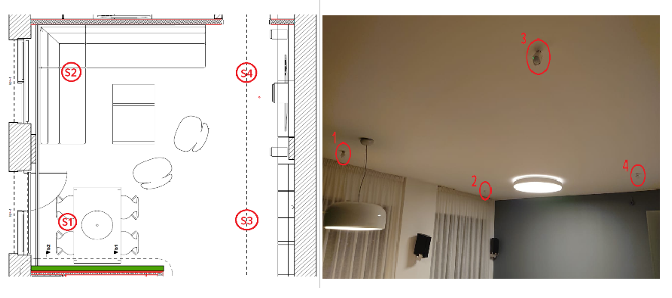
More or less jokingly, we call VIKI the ‘virtual butler’, because there is a continuous analysis of human behavior, and the system’s answer comes immediately.
Exploring more closely the implementation of the decision mechanism, you can see below how the data collected by sensors in different situations of living space and times of day are transformed into behavior patterns, which the user classified in the stage primary learning system. I usually give as an example the ‘training’ of VIKIKNOWS as being similar to the education of a 3 to 5 years old child. If we constantly do things a certain way and tell the child what we are doing, he will soon learn that the activity has a name and a predictive way of doing things. Likewise, the functioning of VIKIKNOWS is determined by the experience gained in similar situations perceived through the sensors.
The images below show the motion densities recorded by the S1-S4 sensors (each sensor is assigned a color), in the activity inside the observed test space and defined by the user as DINNER (dinner time). It is observed that there is a movement pattern in this activity, a pattern that the AI recognizes with the help of advanced classification algorithms, and once the activity is recognized, the system generates commands to adjust the lights, air conditioning / ventilation or ambient music system according with the habits already learned from the user in previous experiences during the DINNER.
Motion pattern recorded by sensors in DINNER mode
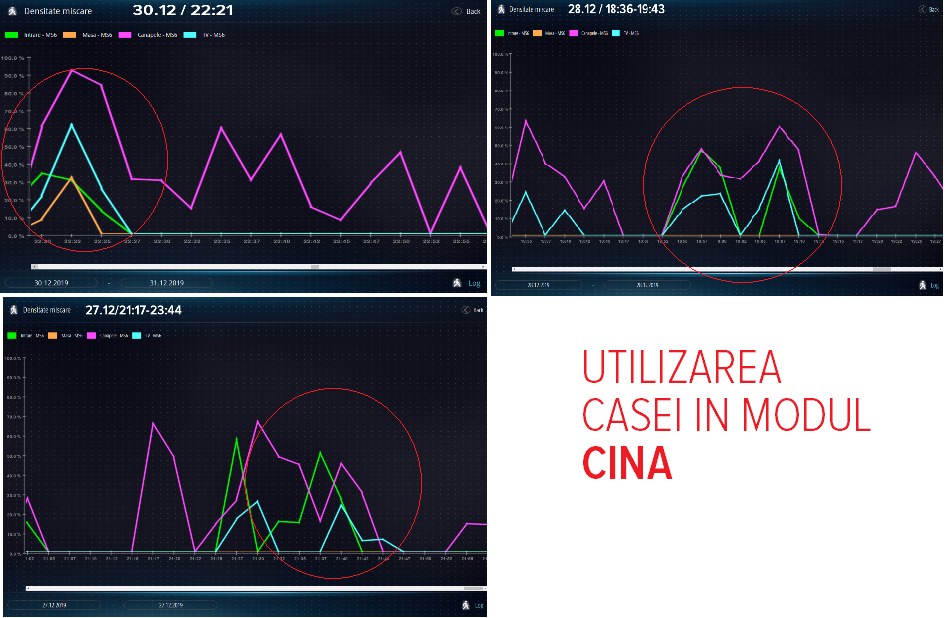
Depending on the input parameters, the algorithm for evaluating the patterns of living in the house (MODE), will determine what are the chances that a certain area (room) of the house is in one of the MODES (activities) learned from the user, and when the prediction function has a sufficiently high percentage of safety (over 50%), the MODULE is activated automatically, together with the environmental facilities, without the user making an explicit gesture in this regard, apart from his own presence.

Graphic interface for viewing the calculation mode for the MODE prediction
Using the same prediction model, I also present a learning pattern of the MODE for a bathroom, where, to simplify the exposure, we will take into account only the time factor and humidity values. I remind you that, in the real case, multiple parameters are taken into account, such as the time of day, movement, movement density, movement trend, humidity, humidity trend etc. The image below reflects 4 cases (situations) used in the training (learning) process of the algorithm, otherwise it can make the difference between the pattern of using the bathroom in SHOWER, StandBy or BUSY mode.
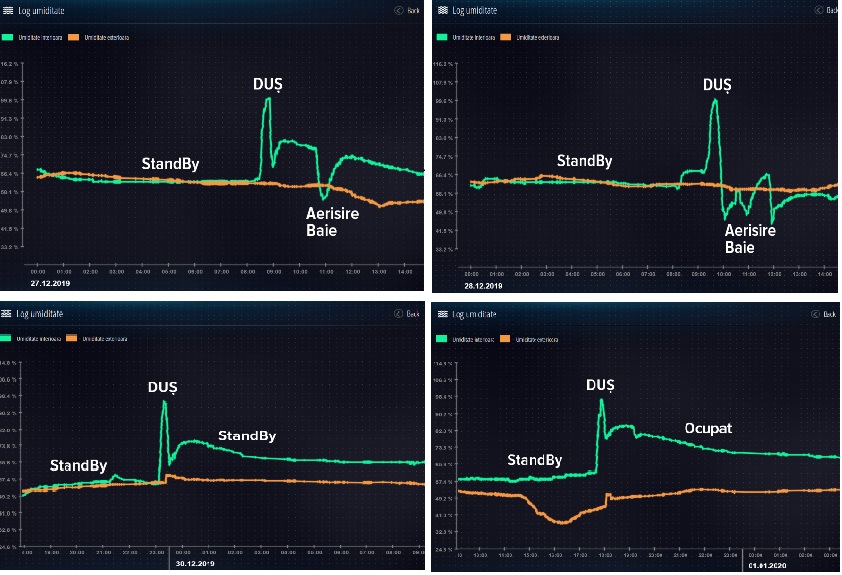
It is observed in this representation with a small number of parameters that the humidity (OY axis) plays an essential role in evaluating the pattern in which the bathroom is located.
In order to understand in detail the way the AI algorithm determines the activity (MODULE) of using the bathroom, we will also make an analysis of the data that the classification logistic regression processes. In the image below, for a simplified and flat representation of the decision graph, not all the data received from the sensors are used, only the time input and the humidity values in the bathroom are kept. In reality, the number of analyzed parameters is much higher, but the graphic representation would not be possible.

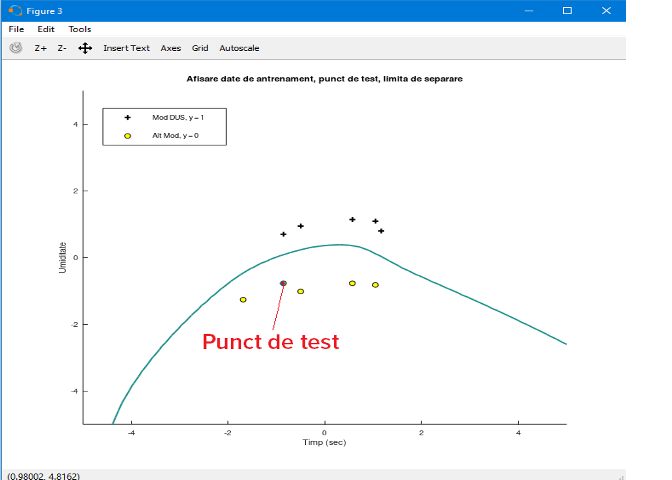
We notice that the normalized and graphically represented training data in a two-dimensional axis system form two sets: those in which the user has labeled and trained the algorithm for the SHOWER activity (+) and those belonging to other modes, denoted by (o). Following the running of the algorithm we obtain a limit of separation of the two sets, symbolized graphically by the blue line. If we run the classification algorithm for the Test Point it will provide as a result the value of the probability that the current situation is in one of the two sets (SHOWER vs Other Mode). Specifically, the algorithm response for the Test Point with values of 06:30:00 and humidity of 60%, reveals a probability of activating the SHOWER mode below 20%.
In light of the above, we can conclude that the Artificial Intelligence (AI) algorithm implemented in VIKIKNOWS exclusively reproduces only human behavior learned from the inhabitants of the house in which it is installed, closely ‘imitating’ their habits, and the chances that its decision should differ from the family’s habits is practically non-existent. The imitation of human behavior by the VIKIKNOWS AI improves over time, as the system receives more and more information about the preferences of users or the group of users living in the house.
Dan Chiuzbăian
Project Manager VIKIKNOWS
[email protected]
